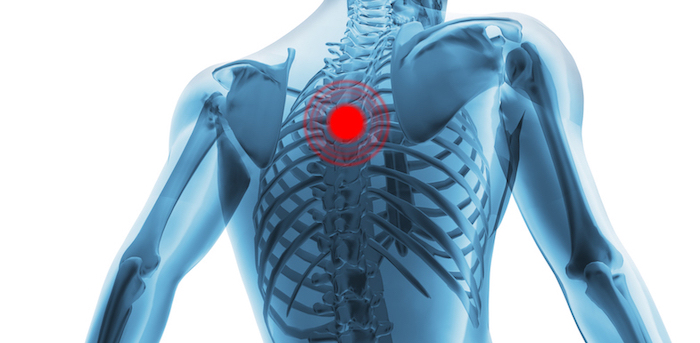
Regardless of whether spinal pain originates in the neck, upper back, or lower back, it can become bad enough to reduce your ability to enjoy an active lifestyle. But there are also some aspects that make upper back pain different from neck and lower back pain. Let’s explore 3 of them.
1. Upper Back Pain Is Less Common
Estimates regarding the prevalence of upper back pain vary widely. However, compared to neck pain and lower back pain, upper back pain is considered relatively rare. One commonly cited reason for less upper back pain is that the thoracic spine has extra support from its attachment to the rib cage, which is critical for protecting vital organs. Meanwhile, the neck and lower back are more mobile and likelier to experience tweaks and/or painful degeneration due to excessive movements.
2. Teenagers May Have Higher Risk for Upper Back Pain
While most studies clearly indicate that the risks for spinal pain in the neck and lower back tend to increase with age, this pattern may not hold for upper back pain. One study surprisingly found that adolescents had higher rates of reported upper back pain compared to other age groups. The same study also noted that older adolescents were at increased risk for upper back pain compared to younger adolescents.1
There are potentially several reasons to explain an increased risk for upper back pain in adolescence. One possibility is that schoolchildren tend to start using heavier backpacks during this period.
Upper back pain is also more common in females and can often be muscular in origin due to anatomical differences in the chest among males and females. Simple strengthening exercises in physical therapy or other conservative (nonsurgical) treatments have a high success rate.
3. Upper Back Pain Is Less Likely to Be Treated Surgically
Compared to the neck and lower back pain, upper back pain is more likely to be caused by a serious underlying spinal pathology. However, upper back pain is also less likely to have a surgical solution.
There are two main reasons why upper back pain is less likely to be treated via surgery:
- The thoracic spine is more rigid due to being connected to the rib cage. So it’s harder for surgeons to access and work with the thoracic spine.
- In addition to the spinal cord, vital organs near the thoracic spine such as the heart and lungs increase the complexity and risks of operating in this region.
It is rare for an MRI or CT scan of the thoracic spine to identify an anatomical problem causing upper back pain that can be fixed by surgery. Even as technology continues to improve and more surgical options are becoming available for thoracic spine surgery, nonsurgical treatments are commonly the recommendation for upper back pain.
Should all nonsurgical measures fail, it's typically recommended to have further workup to rule out other possible non-spinal origins for upper back pain such as the heart, gallbladder, or autoimmune causes to name a few.
Precision Pain Care and Rehabilitation has two convenient locations in Richmond Hill – Queens and New Hyde Park – Long Island. Call the Richmond Hill office at (718) 215-1888, or (516) 419-4480 for Long Island office, to arrange an appointment with our Interventional Pain Management Specialist, Dr. Jeffrey Chacko.













